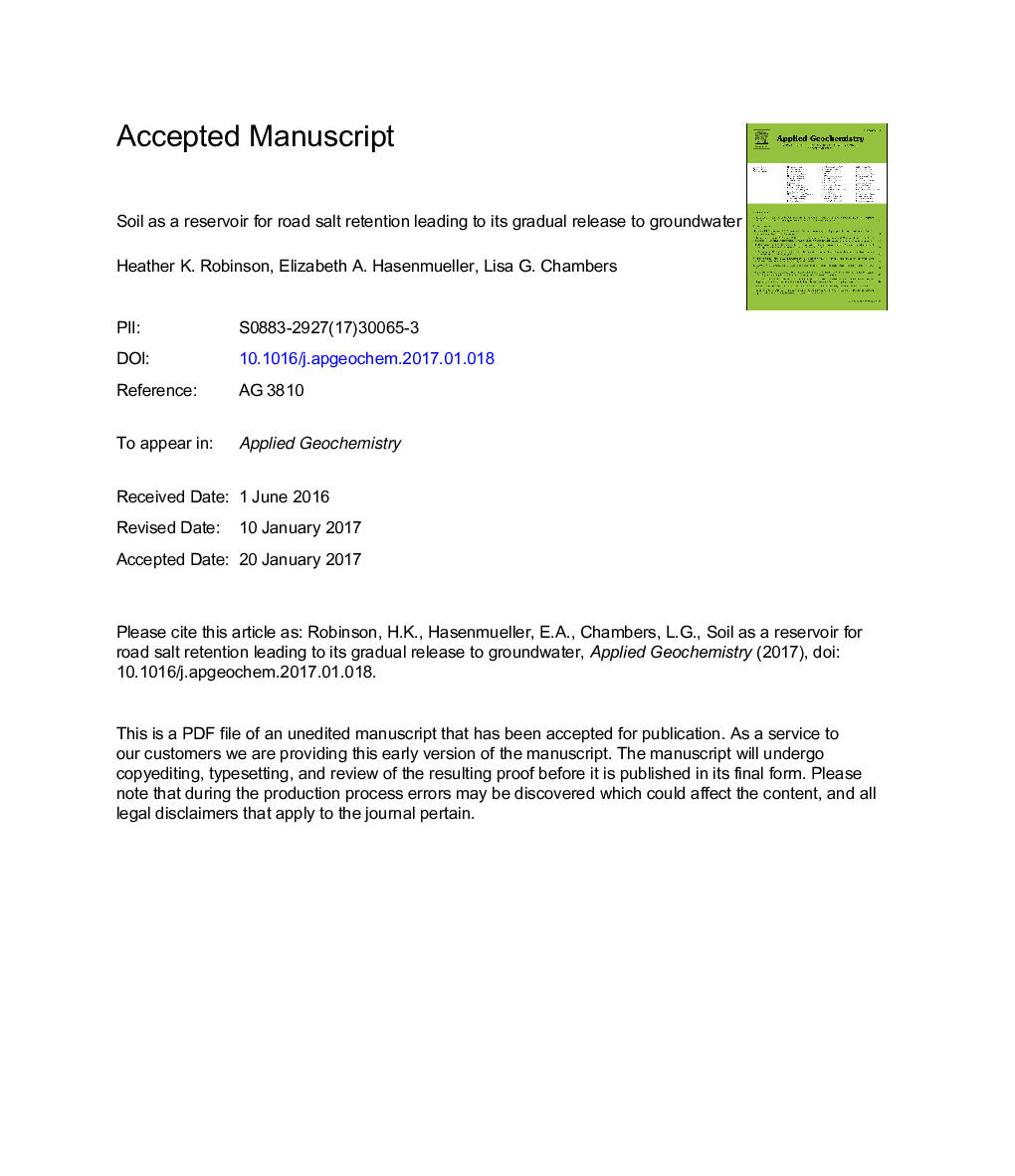| کد مقاله | کد نشریه | سال انتشار | مقاله انگلیسی | نسخه تمام متن |
|---|---|---|---|---|
| 5752551 | 1620208 | 2017 | 50 صفحه PDF | دانلود رایگان |
عنوان انگلیسی مقاله ISI
Soil as a reservoir for road salt retention leading to its gradual release to groundwater
ترجمه فارسی عنوان
خاک به عنوان یک مخزن برای نگهداری نمک جاده ای که منجر به انتشار تدریجی آن به آب های زیرزمینی می شود
دانلود مقاله + سفارش ترجمه
دانلود مقاله ISI انگلیسی
رایگان برای ایرانیان
کلمات کلیدی
ژئوشیمی خاک خاکهای شهری، حمل و نقل آلاینده، نمک جاده، کلرید،
موضوعات مرتبط
مهندسی و علوم پایه
علوم زمین و سیارات
ژئوشیمی و پترولوژی
چکیده انگلیسی
Road salt application elevates Na and Cl concentrations throughout the year in many surface water and groundwater systems. This study explores the role of soils in extending the lag time between road salt application and the delivery of Na and Cl to shallow groundwater in a temperate environment. Intact soil cores were collected near karst springs at both an urban and a rural site at distances of 1Â m, 5Â m, and 13Â m from nearby roads that experience winter salting. Cores were manipulated in the lab to simulate various field conditions; treatments included irrigation with: 1) deionized (DI) water (DI group) as a control, 2) NaCl solution (salt group) to mimic prolonged exposure to road salt, or 3) NaCl followed by DI water (recovery group) to mimic winter road salting followed by dilute rainfall in spring. In the first NaCl irrigation of the salt and recovery groups, soils retained 62% of the applied Cl and 66% of the applied Na on average, which was largely stored in the porewater. Throughout the 5 week study, Ca, Mg, and K were elevated and the pH was depressed in leachate from salt group compared to DI group cores due to cation exchange. Likewise, cation exchange enhanced Na retention so that salt and recovery group cores retained half of the applied Na at the end of the experiment, compared to a quarter of the Cl. Na and Cl retention were greater for soils from the rural site, which is characterized by higher organic matter (OM) and sand content, faster infiltration, and lower bulk density than for the urban site, which has higher bulk density and more silt and clay. Furthermore, extractable Cl in untreated field soils was positively correlated with soil water content, OM, and sand content, suggesting that these properties may control retention. We assume Cl retention to be the result of porewater retention, microbial uptake, and chlorination of soil OM. After the addition of 2000Â mg Cl to the salt group cores, non-conservative Cl behavior ceased because the retention capacity of the soils had been exhausted. Recovery rates during DI flushes of recovery group cores indicate that these soils slowly release Na and Cl for at least 2.5-5 months following salt application. This gradual release from soils helps to explain the year-round persistence of high salt concentrations in some surface waters and groundwaters.
ناشر
Database: Elsevier - ScienceDirect (ساینس دایرکت)
Journal: Applied Geochemistry - Volume 83, August 2017, Pages 72-85
Journal: Applied Geochemistry - Volume 83, August 2017, Pages 72-85
نویسندگان
Heather K. Robinson, Elizabeth A. Hasenmueller, Lisa G. Chambers,
